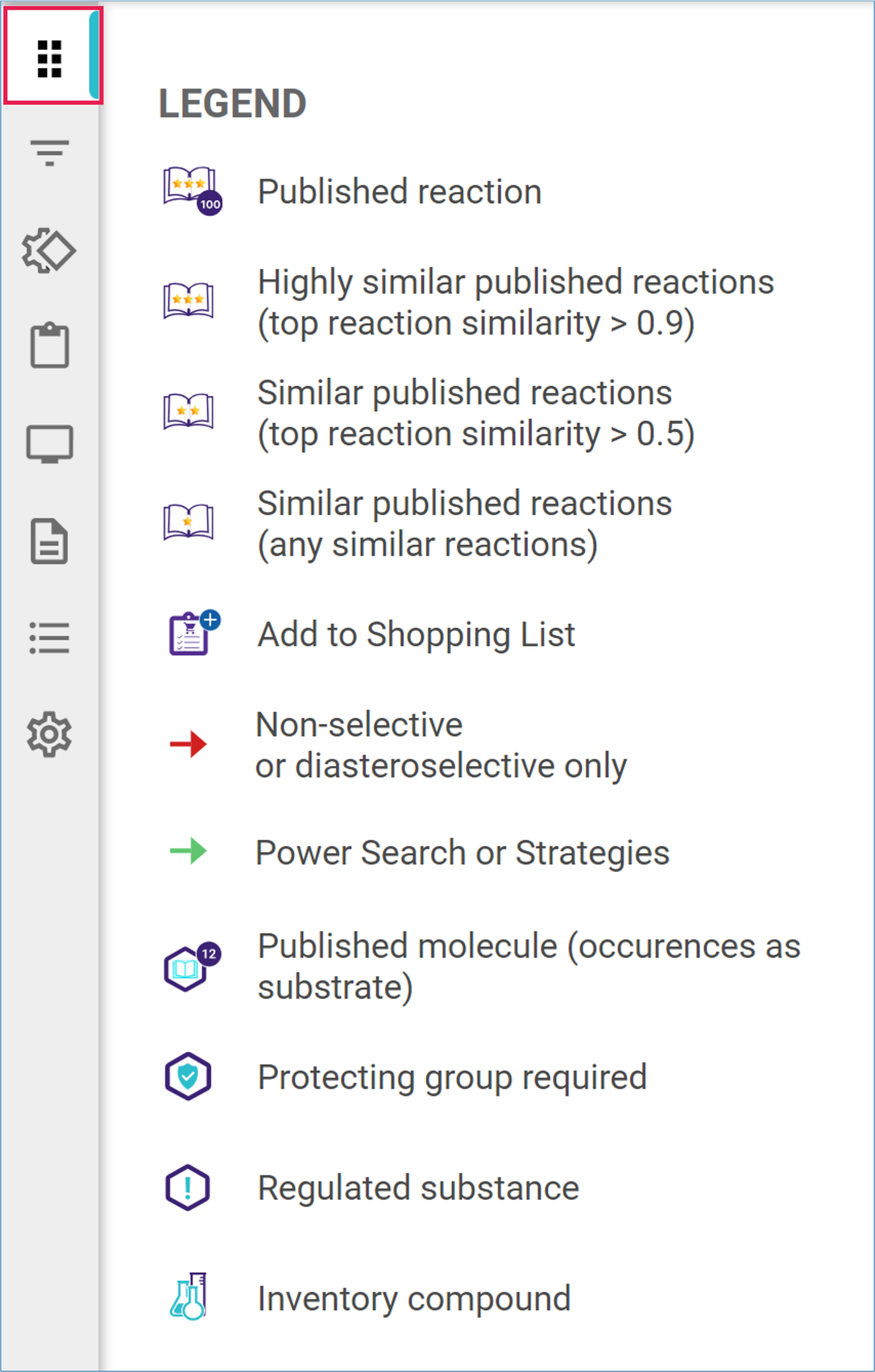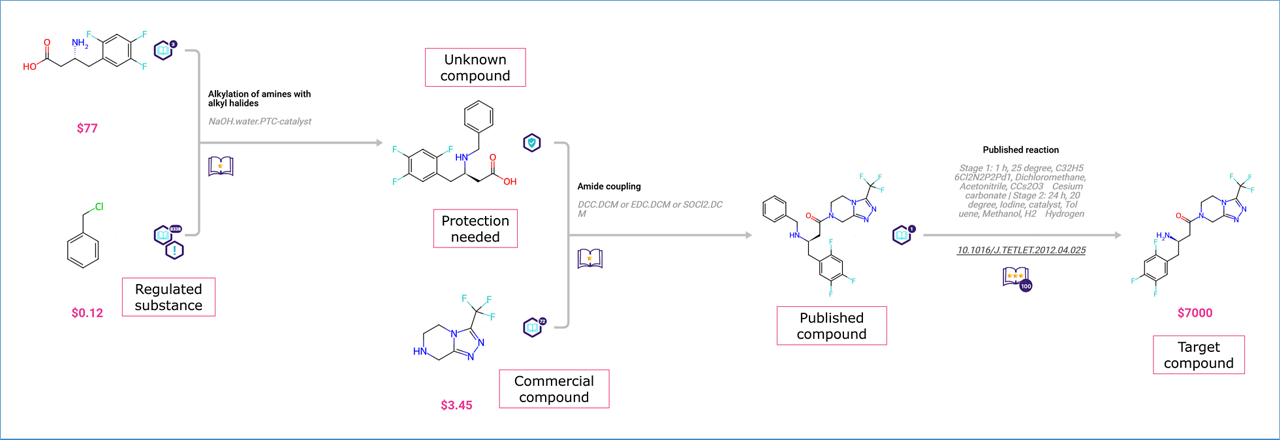Path View Legend
Click the ‘Legend’ icon to open a panel that displays the key for the pathway tags.

Similar reactions
The book tag located under the reaction arrows indicates that published reactions similar to the suggested reaction in the pathway have been identified. The number of stars in the book signifies the degree of similarity between the published reactions and the suggested reaction.
- Three stars and a ‘100’ badge: The suggested reaction is either a published reaction or has a corresponding published reaction.
- Two stars: The most similar reactions have a similarity score of 0.5 or higher.
- One star: The most similar reactions have a similarity score of less than 0.5.
Click the book tag to open the Similarity tab of the Reaction Card. (See “Reaction Cards” for more details.)

Add to Shopping List
For commercially available compounds, click ‘Shop Now’ to add the compound to your Shopping List. For instructions on setting up and using your Shopping List to select commercial compounds you wish to purchase, please refer to the “Shopping List” section in the Analysis Dashboard User Guide.
Reaction arrows
Hover over any colored reaction arrow to view a label indicating the nature of the reaction. Red arrows signify that the reaction is either nonselective or diastereoselective only, while green arrows indicate that the reaction is suggested as part of a Strategy or Power Search option.

Compound tags
Compound tags are hexagon-shaped and provide additional information about the compounds at a glance.

Published Molecules
A Book tag next to a compound indicates that the compound is included in our databases of published compounds. The number displayed in the badge represents the popularity score of the compound, reflecting the number of times it has been featured in a published reaction. It is possible for a published compound to have a popularity score of 0 if it has been described in scientific literature but not in a synthesis (for example, metabolites, isolated natural compounds, or virtual compounds claimed in a patent). Additionally, compounds included in our commercial databases display their price per gram below their structure.
Protection Requirement
Compounds displaying a Shield tag indicate that at least one of their functional groups requires protection for the suggested reaction to proceed. Click on the molecule to open the Molecule Card for more information on the protection requirements. (Refer to the “Molecule Cards” section for additional details.)
Regulated Substances
Compounds with a Warning tag are included in one or more lists of regulated substances from governmental agencies. Click on the molecule to open the Molecule Card to find out which agencies list the compound:
- Australia group: List of controlled chemical weapons precursors.
- Department of Homeland Security: List of chemicals of interest monitored by the DHS for counter-terrorism purposes.
- Drug Enforcement Administration, U.S. Department of Justice: List of controlled substances and chemicals that may be used to manufacture controlled substances or illicit drugs.
- Environmental Protection Agency: List of regulated substances that may cause serious adverse effects to human health or the environment if accidentally released.
- Environmental Protection Agency List of Lists: Consolidated list of hazardous chemicals subject to reporting requirements.
For more information, please refer to the “Molecule Lists” section.
Inventory Compounds
Compounds available in a custom inventory on the user’s site are marked with a Chemistry Glassware Set tag. For more information, please refer to the “Custom Inventory” section.
.png)

